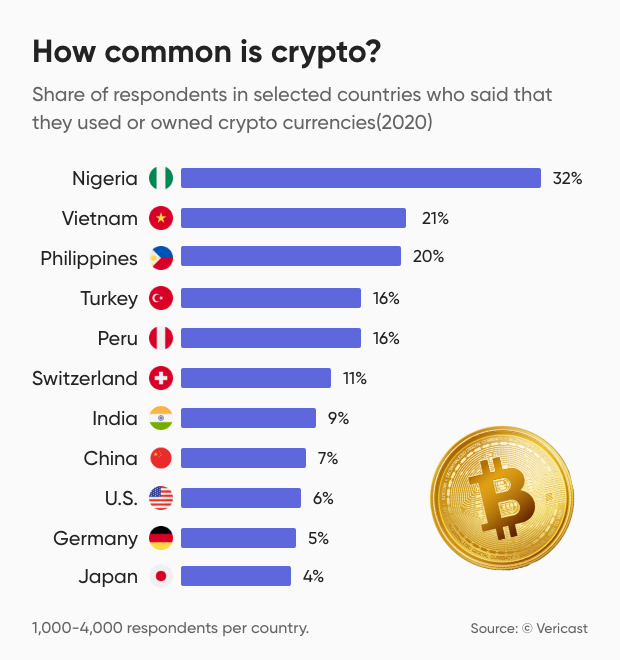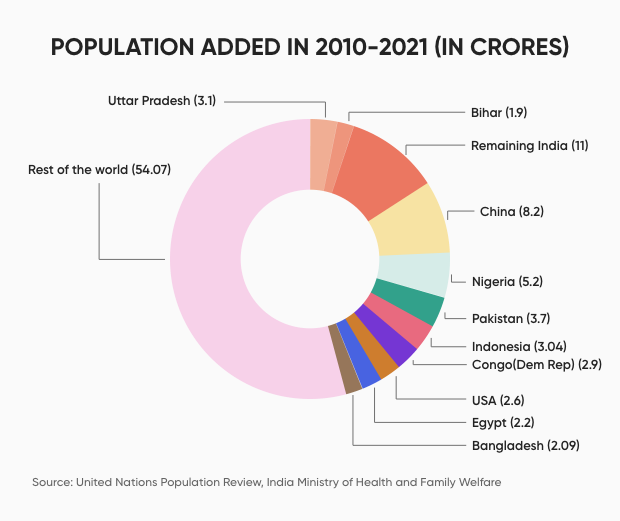Here are 3 interesting things happening in the world of finance
🤳 SEBI is working on guidelines to regulate Finance Influencers
🪙 Trust in Indian Crypto Exchanges in question since the crash of FTX
🌎 8 Billion People on Earth - how will this affect GDP?
Read Time: 1.4 mins

1. Are finance Influencers in trouble?
230 million Indians are now on Instagram
Meta-owned Instagram has reportedly grown its user base in India by 200 million downloads over the last 18 months. Almost half that user base falls in the 18 to 24-year-old male demographic. Many Gen Z & millennials sources their information from the app.
The dominance of Finance Content
There are 105,127 influencers in India with between 1,000 and 10m followers. A study by CNBC found that 35% of 18 to 34-year-olds use social media to look into possible investments.

The Simplicity of ‘Finfluencers’
A financial influencer may not be qualified enough or a registered investment advisor to be giving advice to the public. Brands often rope in influencers to advertise their products or services. These include mutual fund investments or crypto platforms or even IPOs, where influencers review the prospectus to attract retail attention.
SEBI steps in with possible regulations
SEBI is considering ways through which such ‘finfluencers’ can be brought under the regulatory net. According to an official, the regulator is trying to find a solution whereby at least those who are cashing out by giving advice on social media are brought under the regulatory ambit.
Stack’s Verdict: Financial influencers don’t have a stake in your loss. It’s always advisable to research your investment choices thoroughly and get your sources from registered and regulated advisors or platforms.

2. What the FTX going on?
Rise and fall of FTX
Former Wall Street trader Sam Bankman-Fried and ex-Google employee Gary Wang founded the FTX cryptocurrency exchange. FTX filed for bankruptcy on Nov. 11 after a surge of customer withdrawals earlier in the month. Sam Bankman-Fried admitted that the company did not have sufficient assets in reserve to meet customer demand.
Can Indian Crypto Exchanges be trusted?
Experts believe crypto exchanges that release company reports regularly and have a transparent fund-management mechanism are relatively safer for investors. Proof of reserves is an attempt to provide public transparency to centralized cryptocurrency reserves through a verifiable auditing practice.
The 5% Golden Rule
Experts recommend investing 5% or less of your investable assets (your investable cash, stocks, bonds, mutual funds, exchange-traded funds, etc.) in crypto if you have high confidence that crypto will significantly outperform stocks.

Web3 & Crypto
Web3 has become a catch-all term for the vision of a new, better internet to give power back to users in the form of ownership with blockchain technology. Wallets allow you to carry your cryptocurrency around. That’s the backbone of Web3.
Stack’s Verdict: Investing less than 5% of your portfolio is the best option for cryptocurrency. It’s still unregulated and there is no firm way to predict where this will go in the future. Web3 intends on using crypto for its utility more than as an investable asset.

3. 8 billion people & the economy
India is the biggest contributor
India added a little over 170 million people to its population between 2010-2021 — which is about 17 per cent of the 1 billion people the world has added.

More people, less growth
Rapid population increase can exacerbate the challenge of ensuring that future development is sustainable and inclusive. Achieving Sustainable Development Goals, particularly those related to health, education and gender equality, can contribute to slowing global population growth.

Population & GDP
Population growth should lead to a continuation of global GDP growth, but the impact may be modest because even though the working-age population is increasing it is concentrated in countries with low labour productivity.
Stack’s Verdict: Population change will have profound implications for national, regional, and global economies. GDP growth could be slower by about 1 percentage point per year, declining more sharply than population growth. Living standards of working-age adults may be squeezed by high spending on children and seniors and population ageing will likely push public debt, private assets, and perhaps productivity higher.
At Stack, we grow your wealth like it's ours. Invest like the top 1% with 👉 expert-built diversified portfolios





